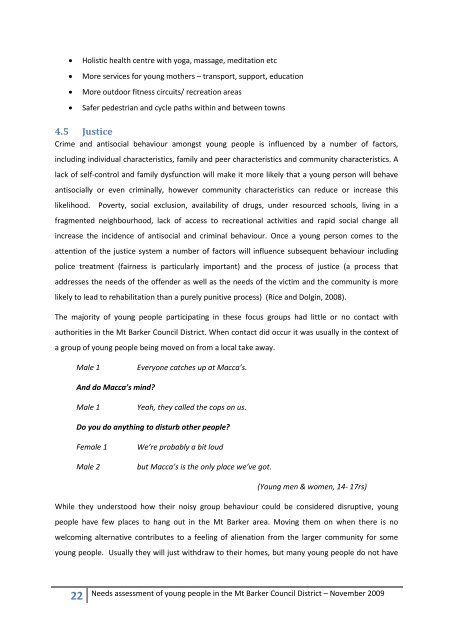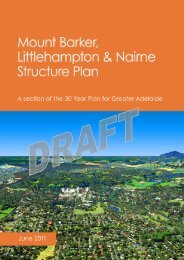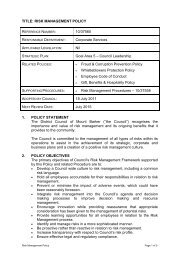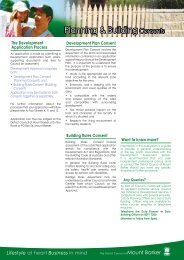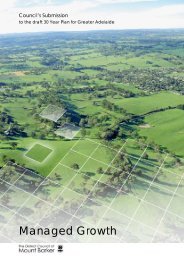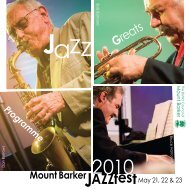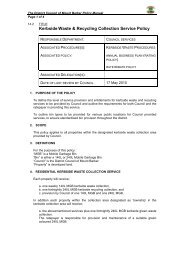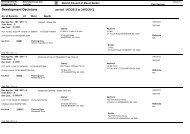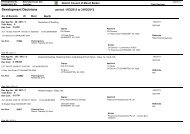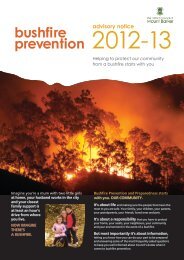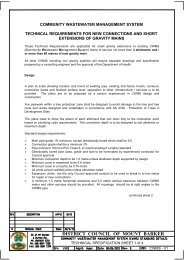Youth Research Qualitative Report - District Council of Mount Barker
Youth Research Qualitative Report - District Council of Mount Barker
Youth Research Qualitative Report - District Council of Mount Barker
Create successful ePaper yourself
Turn your PDF publications into a flip-book with our unique Google optimized e-Paper software.
Holistic health centre with yoga, massage, meditation etc<br />
More services for young mothers – transport, support, education<br />
More outdoor fitness circuits/ recreation areas<br />
Safer pedestrian and cycle paths within and between towns<br />
4.5 Justice<br />
Crime and antisocial behaviour amongst young people is influenced by a number <strong>of</strong> factors,<br />
including individual characteristics, family and peer characteristics and community characteristics. A<br />
lack <strong>of</strong> self-control and family dysfunction will make it more likely that a young person will behave<br />
antisocially or even criminally, however community characteristics can reduce or increase this<br />
likelihood.<br />
Poverty, social exclusion, availability <strong>of</strong> drugs, under resourced schools, living in a<br />
fragmented neighbourhood, lack <strong>of</strong> access to recreational activities and rapid social change all<br />
increase the incidence <strong>of</strong> antisocial and criminal behaviour. Once a young person comes to the<br />
attention <strong>of</strong> the justice system a number <strong>of</strong> factors will influence subsequent behaviour including<br />
police treatment (fairness is particularly important) and the process <strong>of</strong> justice (a process that<br />
addresses the needs <strong>of</strong> the <strong>of</strong>fender as well as the needs <strong>of</strong> the victim and the community is more<br />
likely to lead to rehabilitation than a purely punitive process) (Rice and Dolgin, 2008).<br />
The majority <strong>of</strong> young people participating in these focus groups had little or no contact with<br />
authorities in the Mt <strong>Barker</strong> <strong>Council</strong> <strong>District</strong>. When contact did occur it was usually in the context <strong>of</strong><br />
a group <strong>of</strong> young people being moved on from a local take away.<br />
Male 1<br />
Everyone catches up at Macca’s.<br />
And do Macca’s mind<br />
Male 1<br />
Yeah, they called the cops on us.<br />
Do you do anything to disturb other people<br />
Female 1<br />
Male 2<br />
We’re probably a bit loud<br />
but Macca’s is the only place we’ve got.<br />
(Young men & women, 14- 17rs)<br />
While they understood how their noisy group behaviour could be considered disruptive, young<br />
people have few places to hang out in the Mt <strong>Barker</strong> area. Moving them on when there is no<br />
welcoming alternative contributes to a feeling <strong>of</strong> alienation from the larger community for some<br />
young people. Usually they will just withdraw to their homes, but many young people do not have<br />
22<br />
Needs assessment <strong>of</strong> young people in the Mt <strong>Barker</strong> <strong>Council</strong> <strong>District</strong> – November 2009


